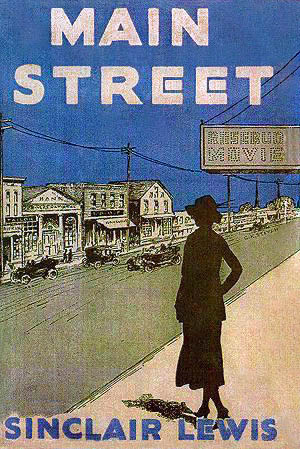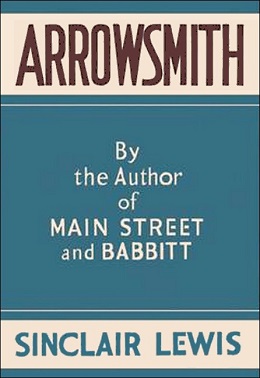Main Street presented an idea Lewis had mulled over for years. In the summer of 1905, Lewis had jotted down in his journal the genesis of the “village virus”: “In company with Paul Hilsdale,—drank too much port wine. ‘The village virus’;—I shall have to write a book of how it getteth into the veins of good men & true. ‘God made the country & man made the town—but the devil made the village.’” The “village virus” dulled the ambition of men and women and trapped them in the eddies of meaningless contentment. Figuratively, it neatly stitches together Lewis’s novels Main Street and Arrowsmith, the former about an audacious town booster and urban romantic, and the latter about an aspiring doctor and scientist eventually challenged with treating bubonic plague on a fictional Caribbean island.
In their realism, Lewis’s novels intended not to escape American life, but face it head on. We witness, in satirical and vitriolic fashion, a man’s perception of the viruses eating away at early twentieth-century American culture. The critique is always juxtaposition. Lewis reveals what is spoiled and rotten through a yearning for an attractive alternative, glowing bright in the far-off horizon. As both an historian of science and urban historian, I became fascinated by Lewis and his novels. He is obsessed with looking forward, toward an unsettled modernity that will breathe life into the slow and provincial minds of his country men and women. In Main Street and Arrowsmith, those yearnings find expression in the town and city boosterism of Carol Kennicott and the scientific idealism of Martin Arrowsmith. Science and city intertwine as these characters restlessly move, constantly in search of pure forms of expression—science for science’s sake, or the self-actualization of immersion in the pulse and rhythm of the modern metropolis.

As clear products of their time, Lewis’s novels present themes that would be incredibly familiar to a historian of the early twentieth century—corporatization, technocratic control, the expansion of consumption, eugenics, nationalism during World War I, gender liberation, and more. But how can these sources (Main Street and Arrowsmith, in particular)—read by millions of Americans in the early twentieth century—provide a glimpse into how science and city existed, together, as pillars of modern American thought? What can Lewis’s focus on the small town reveal about urban history? And did living and working in Washington, DC, matter for how he chose to write these stories?

